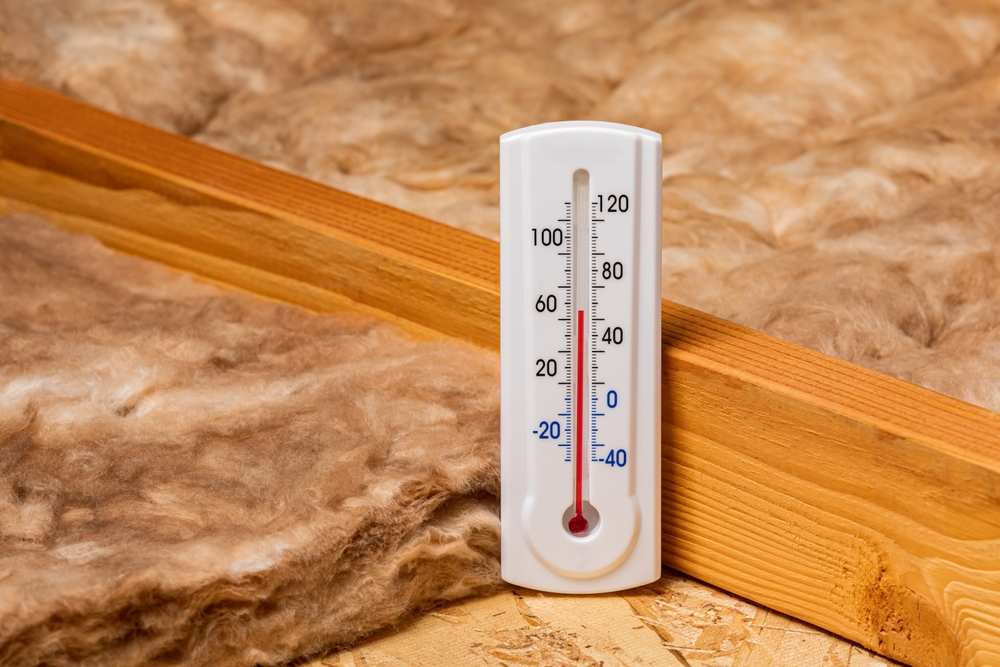Choosing R-Value for Insulation of Exterior Walls
Understanding and selecting the appropriate R-value for insulation is a critical aspect of building design and renovation. The R-value serves as an indicator of an insulation material’s ability to resist heat flow. An essential consideration in this process is determining what r value of insulation for exterior walls is needed, impacting energy efficiency and overall comfort. Generally, for most climates and building styles, an R-value in the range of R-13 to R-21 is recommended for exterior walls. However, this can vary based on specific factors such as local climate conditions, building design, and energy codes.
Understanding R-Value
R-Value is a measure of insulation’s thermal resistance. It indicates the material’s ability to resist heat flow. The higher the R-Value, the better the material is at insulating. This resistance means that in winter, heat stays inside the building, and in summer, it stays outside, leading to a more comfortable living environment and potentially lower energy bills.
Choosing the right R-Value is essential for effective insulation. Here are common R-Values for exterior walls and what they imply:
- R-13 to R-15: Typically found in most standard wall cavities and considered the minimum requirement for many areas.
- R-19: Often used in spaces with more room for insulation, like larger wall cavities or double-stud walls.
- R-21 to R-25: Higher efficiency insulation, which might be required or recommended in colder climates.
Factors to Consider When Choosing the Right R-Value for Exterior Walls
New Construction Insulation Requirements
New builds must adhere to strict insulation codes, often mandating specific R-values per region. These requirements are designed to ensure optimal energy efficiency and building integrity from the start. When planning a new construction, it’s vital to consult local codes for precise R-value mandates, as these not only affect immediate comfort but also long-term energy costs and environmental impact. Balancing these requirements with the factors mentioned will lead to a well-insulated, efficient, and compliant new home.
Considerations for Different Climates
- Northern States (Colder Climates): Homes here need higher R-values to prevent heat loss during the long, cold winters. Insulation with R-values like R-49 in the attic and R-21 in walls is common.
- Southern States (Warmer Climates): In these regions, the focus is on keeping heat out. Lower R-values like R-30 in the attic and R-13 in walls might be sufficient.
- Coastal Areas: Humidity and salt can affect building materials. Consider insulation that also offers moisture resistance.
- Mountainous Regions: The altitude can drastically change the temperature and insulation needs. Higher R-values are often necessary.
- Desert Climates: Extreme heat during the day and cold at night require insulation that can adapt to rapid temperature changes.
Local Variations and Microclimates
- Urban vs. Rural: Urban areas often experience the heat island effect, where accumulated heat from buildings, cars, and asphalt can make these areas warmer than their rural counterparts. This phenomenon may necessitate a slightly lower R-value to prevent over-insulation in urban settings.
- Wind Exposure: Buildings in areas exposed to high winds may lose heat more rapidly. In such locales, a higher R-value may be beneficial to counteract the increased heat loss, ensuring a stable indoor temperature.
- Sun Exposure: The orientation of your home and the amount of daily sunlight it receives can dramatically affect heating and cooling needs. Homes with significant sun exposure might require different insulation strategies compared to those in shaded areas.
Potential Issues
Being aware of potential insulation issues can help you make more informed choices and avoid common pitfalls.
- Over-Insulation: While a high R-value is generally good, too much insulation can trap moisture inside the walls, leading to mold growth and wood rot. It’s crucial to balance insulation with proper ventilation to maintain a healthy and durable home environment.
- Under-Insulation: Insufficient insulation can lead to increased energy consumption as your heating and cooling systems work harder to maintain a comfortable indoor climate. This not only leads to higher energy bills but can also contribute to a less stable and comfortable indoor environment, with rooms feeling drafty in winter and overly warm in summer.
Elevating Insulation Standards with Smartech’s QUATTRO
Smartech’s QUATTRO Insulation is a game-changer in insulation technology, catering to the sophisticated demands of contemporary construction. QUATTRO stands out with its thin, multi-reflective four-layer aluminum structure, offering exceptional thermal resistance. It’s an all-in-one solution, functioning as insulation, vapor barrier, and roof membrane.
Key features of QUATTRO:
- Reflective Power: QUATTRO effectively reflects 96% of radiant heat, thanks to its high-quality aluminum layers.
- Durability and Safety: Environmentally friendly and non-toxic, QUATTRO boasts a long lifespan and zero toxic burn gases emission in extreme heat.
- Moisture and Air Impermeability: Its unique composition makes it highly resistant to moisture and air, addressing common insulation problems.
Making the Right Choice
Whether you’re building new or upgrading an existing structure, the right R-value and quality insulation material can make all the difference. When you consider the climate, proper installation, and high-quality productd like Smartech’s QUATTRO, you can significantly improve your building’s performance, comfort, and efficiency.
Visit Smartech’s QUATTRO Insulation to learn more about how QUATTRO can revolutionize your insulation approach, ensuring your building is not just insulated, but thoroughly optimized for comfort and efficiency.

Looking for More Information?
Check out our Resources or Contact Us
